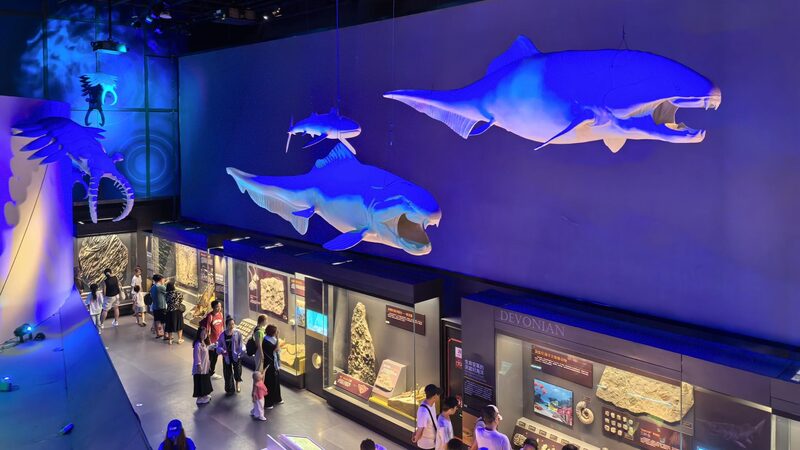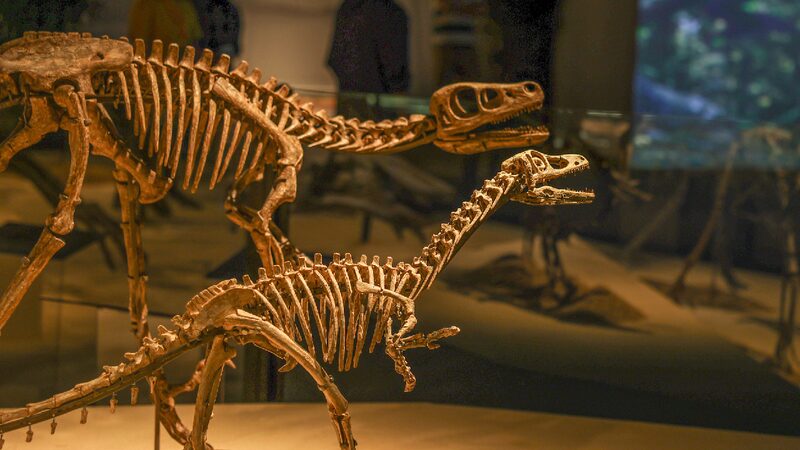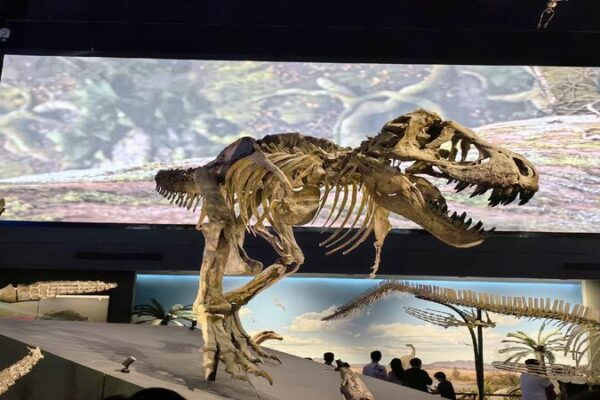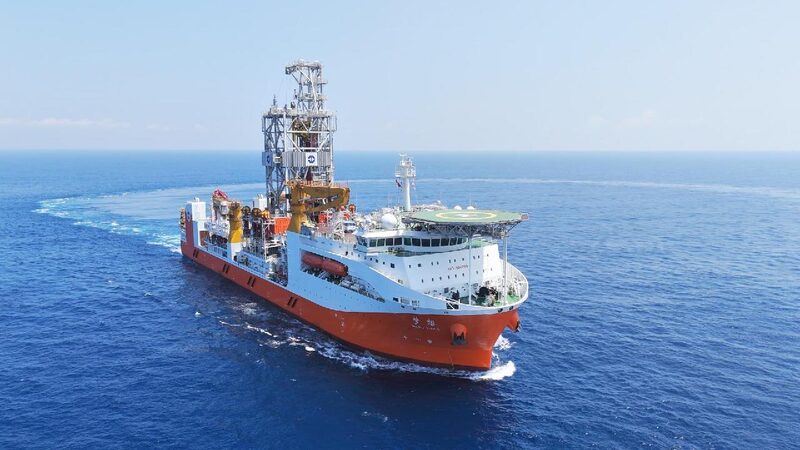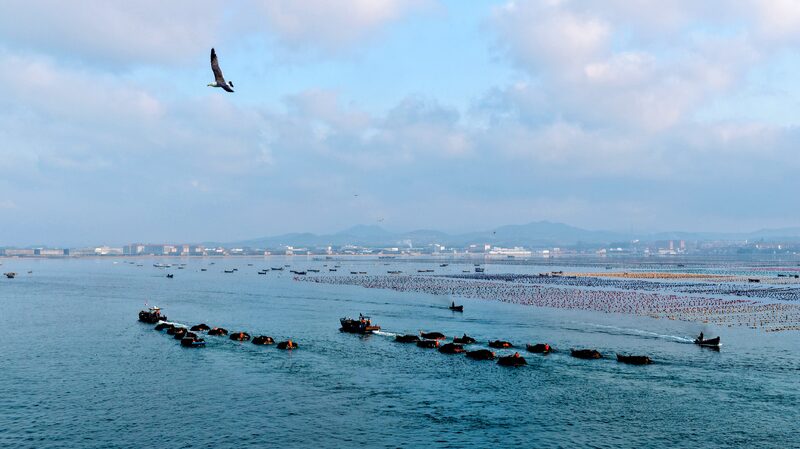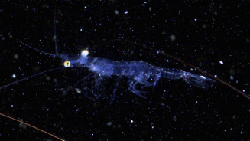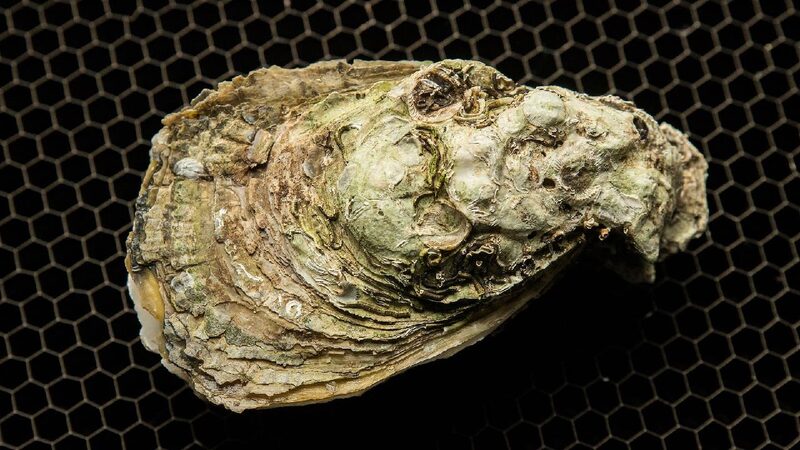The Ancient Ocean Exhibition Hall at the National Maritime Museum in north China’s Tianjin is a treasure trove for marine enthusiasts and history buffs alike. Showcasing over 1,000 precious fossil specimens, the exhibition takes visitors on a journey through Earth’s 4.6-billion-year history, highlighting the evolution of the ocean and life itself.
Visitors can marvel at fossils of trilobites, nautiluses, and ammonites—once inhabitants of ancient oceans—that illustrate the diversity and unique charm of marine organisms across geological periods. The centerpiece of the exhibition is the largest ichthyosaur fossil ever found in China, stretching an impressive 11 meters in length. This highly specialized marine reptile, with its streamlined body and paddle-like limbs, exemplifies how marine life in the Mesozoic era perfectly adapted to their environment.
These ancient fossils are more than just remnants of the past; they carry vital clues about the changes in our oceans and the continuous evolution of marine ecosystems. Each specimen records how life on Earth thrived within the embrace of the ocean, revealing both the interconnectedness and the fragility of marine ecosystems.
The exhibition serves as a poignant reminder of the importance of protecting our marine ecology. By exploring the origins and development of marine life, it underscores the necessity of building a marine community with a shared future, ensuring the safeguarding of life on Earth for generations to come.
Reference(s):
Ancient fossils a testament of marine community with shared future
cgtn.com
